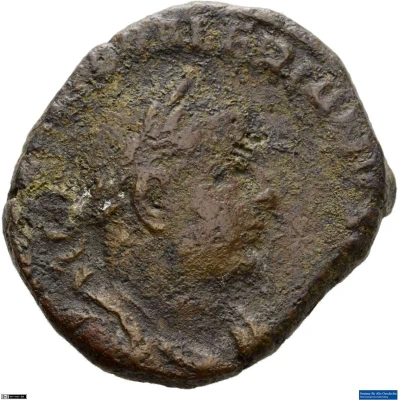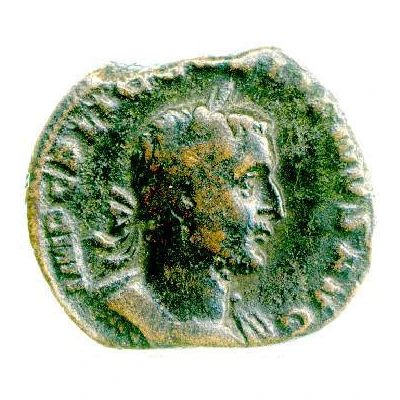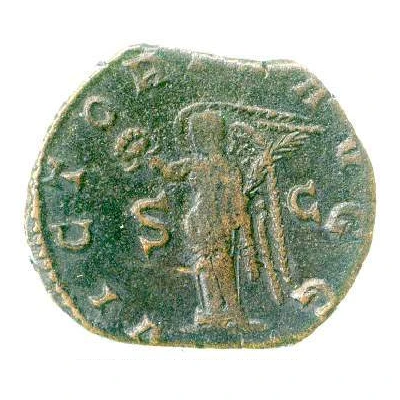


© Münzsammlung des Seminars für Alte Geschichte, Albert-Ludwigs-Universität Freiburg (CC BY-NC-SA 3.0 DE)
Sestertius - Valerianus CONCORDIA EXERCIT S C; Concordia
| Bronze | 14.5 g | 26 mm |
| Issuer | Rome › Roman Empire (27 BC - 395 AD) |
|---|---|
| Emperor | Valerian (Publius Licinius Valerianus) (253-260) Gallienus (Publius Licinius Egnatius Gallienus) (253-268) |
| Type | Standard circulation coin |
| Years | 254-256 |
| Value | Sestertius (⅛) |
| Currency | Antoninianus, Reform of Caracalla (AD 215 – 301) |
| Composition | Bronze |
| Weight | 14.5 g |
| Diameter | 26 mm |
| Shape | Round (irregular) |
| Technique | Hammered |
| Demonetized | Yes |
| Updated | 2024-10-05 |
| Numista | N#286037 |
|---|---|
| Rarity index | 100% |
Reverse
Concordia, draped, standing left, holding patera in right hand and double cornucopiae in left hand.
Script: Latin
Lettering: CONCORDIA EXERCIT S C
Translation:
Concordia Exercituum. Senatus Consultum.
Harmony with the army. Decree of the senate.
Comment
Mass varies: 14.23–14.77 g;Diameter varies: 24–28 mm;
Example of this type:
Münzsammlung des Seminars für Alte Geschichte, Albert-Ludwigs-Universität Freiburg
Source:
Online Coins of the Roman Empire (OCRE)
Interesting fact
One interesting fact about this coin is that it features an image of the Roman goddess Concordia on one side, which symbolizes harmony and unity. This is significant because it suggests that the Roman Empire valued these qualities and wanted to promote them through their currency. Additionally, the coin's design and imagery would have been recognizable to people across the empire, fostering a sense of shared identity and culture.

